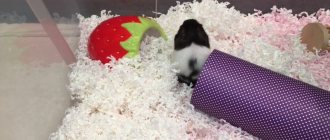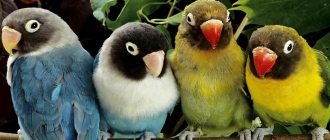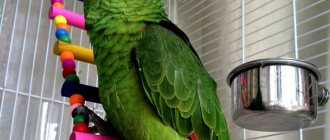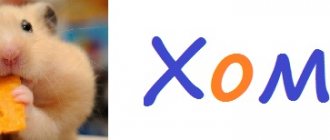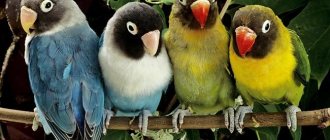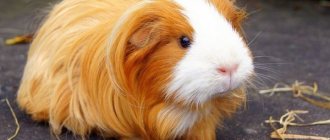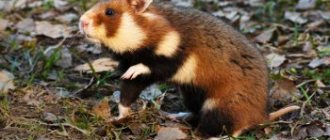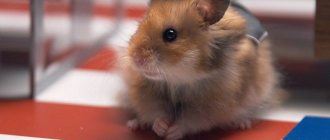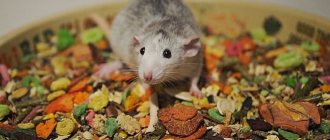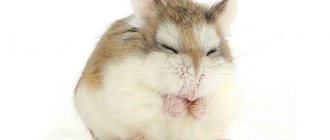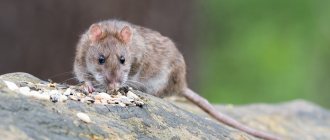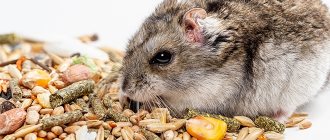Whatever the breed of the hamster, for its full life the toilet in the cage must be fresh. However, this does not mean that you need to use improvised materials such as paper, hay or sawdust as filler. Modern litters are developed under the supervision of leading veterinarians, so they cannot harm the hamster. They can be used as a full-fledged toilet, or they can be placed under the pet’s usual layer of hay. Fillers have many functions. They not only perfectly absorb liquid and unpleasant odors, but also simplify cleaning the cage, and also make the pet’s living environment rich.
The best representatives of fillers for small pets are presented in the rating. Here you will find products of excellent quality that have a lot of positive reviews. They are absolutely safe for rodents. The products have a budget price, and at the same time they make cell care easier. The main task of the owners is the correct choice of filler. In order to try a new product, it is recommended to purchase a small sample quantity. This way you can understand whether it is suitable for your pet.
How to choose a composition for a rodent cage
When the bedding is chosen well, the pet feels comfortable because its fur is dry and clean. Often, paper, hay or fine sand are used to fill the cages of small pets such as rats, hamsters or guinea pigs. The paper version is bad because it practically does not absorb moisture and unpleasant odors. Sand gets dirty quickly, so it needs to be changed regularly. Rodents love hay not only as a warm bed, but also for lunch.
However, there are modern and no less effective fillers of different types:
- Wood pellets do an excellent job of eliminating bad odors and moisture, and are also of natural origin. This option of fillers is popular. There are different sizes of granules; to choose, you need to look at the size of your pet. This composition is suitable for chinchillas, hamsters and rabbits.
- Wood sawdust is also a natural filler. They are easy to dispose of by flushing them down the toilet. They are great for small pet rodents such as dwarf hamsters. However, this option has disadvantages. Sawdust often scatters around the cage and gets stuck in the pet's fur. They do not have the highest efficiency in absorbing moisture and odors.
- Both owners and rodents like the cellulose version. It does not cause irritation and does not stick to the fur. But it can easily scatter around the room, is ineffective in eliminating unpleasant odors, and is rarely found on store shelves.
- The corn composition is suitable for everyone, as it perfectly absorbs moisture and bad odors and is safe for pets. It is ideal for rats, hamsters and mice. However, it has a high price and is rarely found on sale.
The pet's preferences also play a significant role. For example, chinchillas love to take baths in dry sand. Sawdust is also suitable for them. Guinea pigs also like soft wood sawdust, but larger ones. The main thing is that the composition is natural and does not cause an allergic reaction. An important requirement is high absorbency. Cage bedding consisting of cotton wool or pieces of paper is undesirable, as it can cause harm to the animal.
Let's sum it up
Now you know which litter is best for hamsters and you can choose the right option for your pet with good value for money. We hope you have decided what sawdust is needed for hamsters specifically in your case. Theoretically, you can do without the filler, but with it the hamster is warmer, more comfortable, and it is more convenient for the owner to clean the cage. You need to choose pine sawdust with caution; it is acceptable to use pine sawdust, but cedar sawdust is not recommended. You cannot use sawdust from the factory, even from fruit trees, since before production the wood is treated with special compounds against pests.
Beginner hamster breeders are interested in the question of how much filler to lay. It is recommended in one layer, so that the bedding covers the bottom.
Sources:
https://xvostus.com/homyaki/uhod/napolnitel.html https://pets2.me/bok/1398-kakoy-napolnitel-luchshe-dlya-homyakov.html https://homkin.ru/soderjanie/napolnitel- dlya-homyakov.html
Hay
A good option for filling a dzhungarika's cage is hay. You can purchase it at a pet store or make it yourself. Rodents like bedding because it is very similar to their natural habitat. However, when purchasing, you should study the composition and take into account the size of the rodent. the cover should not be too hard or dusty. Rodents love to make small nests out of hay and also feast on dry grass.
Vitakraft VITA VERDE meadow with dandelion flowers 0.5 kg
The product contains a large amount of fiber. The hay consists of meadow grasses, dandelion flowers and timothy. In addition, this hay contains very small amounts of calcium. Therefore, this product is considered not only tasty, but also healthy for rodents and other rodents. Hay normalizes the functioning of the digestive system and prevents abrasion of the incisors.
Also in the composition you can find all the minerals, vitamins, useful micro- and macroelements necessary for the development of your pet. Hay helps improve immunity. It consists of specially collected herbs that are gently dried. Therefore, the rodent’s nutrition is balanced and healthy.
However, the main function of hay is to absorb odors and liquids. Characterized by economical consumption.
Vitakraft VITA VERDE meadow with dandelion flowers 0.5 kg
Advantages:
- the hay is perfectly compacted;
- has a pleasant herbal aroma;
- no fragrance;
- natural composition;
- tight packaging;
- optimal price/quality ratio;
- It is used sparingly.
Flaws:
- dust is occasionally encountered;
- Not too much variety of herbs.
My beast is meadow hay
This formulation of natural herbs creates a natural habitat for pet rodents. Unfortunately, it does not absorb moisture and odor as well as other types of litter. But hay allows the rodent to feel comfortable, build nests in the litter and feast on delicious herbs. Pet owners praise this product and leave positive reviews about it.
When purchasing, you should pay attention to the presence of dust. Due to numerous transportations, the bag of hay is subjected to shaking and dust is formed. If its quantity exceeds half the package, it is better to refuse the purchase. However, there are breeds that prefer hay with a large percentage of dust, for example, Dzungarians.
One package contains 20 liters of high-quality meadow hay. This volume lasts a long time. When you open the package, you can smell the smell of fresh grass, because the collection and drying is carried out in accordance with all the rules. This is a plus not only for the rodent itself, but also for its owners: now a pleasant aroma will prevail in the room. The composition does not include herbs and flowers harmful to the pet, as well as thorny stems that can injure the hamster. This material cannot be flushed down the toilet, since hay does not dissolve in water.
My beast is meadow hay
Advantages:
- profitable price;
- pleasant aroma;
- economical packaging;
- excellent composition;
- no fragrance;
- well compressed;
- tight package;
- does not cause an allergic reaction;
- natural product;
- creates a comfortable environment.
Flaws:
- the volume may be less than stated on the package;
- ineffective in absorbing moisture;
- Not suitable for all rodents.
Wooden houses
Wood is an environmentally friendly material, and in the wild, “fluffies” often encounter it. Therefore, a wooden house is a good choice for a pet. The surface of such housing is rougher than that of a plastic one, which allows the hamster to climb up the wall to the roof.
In pet stores you can find “bedroom” models with a flat or shaped roof. Some wooden houses resemble an ordinary doghouse, only in miniature. However, more beautiful models are also sold, in the design of which ice cream sticks or other wooden elements are used.
Depending on the size of the housing and its design features, the cost of such a “bedroom” is quite affordable for most livestock farmers (60-100 rubles).
Woody
The wood type is compressed sawdust. It is slightly more expensive than regular sawdust, but it pays off with its properties. It copes better with moisture and bad odors, so it does not need to be changed often. Unlike sawdust, it does not stick to rodent fur. Easy to find at a pet store at a budget price.
Sawdust
Sawdust is classified as a universal type of filler. They can easily be found on the shelves of pet stores at an affordable price. They perfectly absorb moisture and eliminate unpleasant odors. It is enough to change them every 3 days. However, this option also has disadvantages. They stick to the hamster's fur, gradually turning into tangles. Some pets may develop an allergy to wood dust.
Sawdust filler
Advantages:
- affordable price;
- popularity;
- rodents love to dig in sawdust;
- easy to find.
Flaws:
- can cause allergies;
- accumulate in wool.
Linen
For hamsters, linen material is also perfect for bedding in a cat cage, since it is intended for pets with sensitive skin on their paws. It is hypoallergenic, does not generate dust, and does not spill outside the cell. The flax composition is an absolutely natural, biodegradable product. It has excellent absorbency and very economical consumption.
flax filler
Advantages:
- smells good;
- biodegradable product, completely natural;
- economical consumption;
- hypoallergenic;
- high absorbent characteristics;
- affordable price;
- has antibacterial properties.
Flaws:
- not found.
Fiory Woody 14 l
Perfect for decorative rabbits, guinea pigs and other rodents. It is recommended to use it only as bedding. The composition of the product is exclusively natural, thanks to which the pet’s health only improves. Sawdust is obtained from deciduous trees.
One of the main advantages of the product is economical use. One package is enough to care for the cage for several months. Sawdust retains moisture well and relieves the apartment of unpleasant odors. It is recommended to store in a dark and dry place. Do not allow it to be exposed to sunlight. In this case, it will retain its properties until the end of its use.
Fiory Woody 14 l
Advantages:
- absence of sharp elements, dust and smell of pine needles;
- does not cause an allergic reaction;
- nice smell;
- perfectly absorbs liquids;
- no restrictions on the period of use;
- the sawdust is perfectly compressed;
- no fragrance;
- environmentally friendly composition;
- economical consumption.
Flaws:
- splinters may occur;
- price.
Clean wooden paws for rodents
The composition of granular sawdust is ideal for the hamster's habitat. One package contains 4 liters of small granules. The product perfectly absorbs moisture and unpleasant odors. When liquid gets in, the granules disintegrate into sawdust, but they still do not stick to the paws and fur of the rodent. The composition fully lives up to its name. Owners should take into account the fact that light sawdust can be scattered by active pets.
“Clean paws” are quite successfully combined with hay bedding, as they neutralize its shortcomings. Thanks to the pleasant aroma of pine needles, owners do not have to worry about an unpleasant odor. Sawdust is easy to throw away and can be flushed down the toilet, which makes cleaning the cage much easier. “Clean Paws” are safe for rodents because they do not contain wood chips or elements that can cause allergies. Curious hamsters may chew sawdust, but this will not harm their health. On the contrary, their teeth even improve from chewing natural hard granules.
Clean wooden paws for rodents
Advantages:
- does not stick to wool;
- completely natural composition;
- copes well with moisture and odors;
- relatively budget price.
Flaws:
- cannot be used on small breed rodents.
When do hamsters dream and why do they need a house?
In the wild, rodents like to build their nests in small shelters: hollows, burrows, recesses, nests. They are nocturnal; during the day, rodents like to sleep. To do this, they choose small spaces that provide the animals with safety, comfort and the necessary thermoregulation.
For pets, their owners have to take care of their comfort. In order for your pet to rest peacefully after nightly “walks” on the wheel, it is advisable to equip its cage with a small house.
In this case, two unforeseen situations may arise. If the hamster does not sleep in the house, there are reasons for this. As a rule, rodents reject housing whose smell they do not like. After washing the home, it should be placed in a place where the animal curls up and rests.
The hamster may simply be hot (especially in the summer), and he chose a more ventilated place. There is no need to worry that the hamster has stopped sleeping in the house if the animal is healthy, active and eats the food offered with appetite. Let him sleep where he is comfortable.
There are also the opposite cases: the pet has become so comfortable in its secluded place that it does not leave the house. This happens when the animal adapts to new conditions, or is very frightened. However, if the "fluffy" does not come out of hiding to eat or drink, then some kind of disease may be the cause. In this case, it is necessary to lure the hamster out of the house or carefully remove it from there by lifting the structure. The animal must be carefully examined and, at the slightest suspicion of illness, shown to a veterinarian.
Cellulose
Paper cage bedding material is perfect for use as bedding for a hamster's cage, especially in cases where the pet cannot tolerate wood dust. This filler is absolutely safe, although it does not retain moisture and unpleasant odors very well. But paper bedding material almost never appears in pet stores. But each owner can easily make the composition himself using scraps of soft paper.
Carefresh Natural 14 l
Made from natural raw materials. Excellently absorbs moisture and retains unpleasant odors. The great advantage of the product is its ease of disposal. To dispose of used cage bedding material, you can simply flush it down the toilet as the product is biodegradable.
Carefresh Natural contains no pine or cedar resins and is completely dust-free. In this regard, the composition is completely safe for the hamster, ensuring that its habitat is close to natural. Carefresh Natural is in great demand among hamster owners.
Carefresh Natural 14 l filler
Advantages:
- contains no essential oils;
- masks odors much better than woody ones;
- no dust;
- harmless to animals and people;
- completely natural;
- does not conduct static electricity;
- does not cause irritation or allergies;
- durable packaging;
- economically used;
- biodegradable product;
- does not stick to hands.
Flaws:
- high price.
Carefresh Colors Confetti
A cellulose product consisting of soft, multi-colored fibers will delight pets and entertain owners. It combines bright bedding and material for building a rodent nest. The hamster happily digs a hole in it or drags bedding material into the house and makes a bed. Carefresh Colors Confetti is completely harmless, does not contain any resins or dust, as well as other ingredients harmful to hamsters. Suitable for even the pickiest or most sensitive hamsters as it is hypoallergenic. Biodegradable material can be easily and safely flushed down the toilet.
The package contains 10 liters of multi-colored filler, which has excellent characteristics: each colored piece absorbs liquids three times its own weight and masks odors well. There is no need to be afraid that the hamster may be poisoned or stained, since the paint on the filler does not come off when wet. Consumers praise the product and note in reviews that it looks smart and does its job well.
Carefresh Colors Confetti filler
Advantages:
- hypoallergenic;
- absolutely harmless;
- affordable price;
- environmental friendliness.
Flaws:
- difficult to find in stores;
- Compared to wood fillers, it retains moisture and odors worse.
Alternative flooring options
What to do if the pet has already arrived at its permanent location, but the cage has not yet been equipped? For a temporary device, clean and soft paper napkins, without multi-colored patterns or fragrances, are suitable.
The animal will happily make a nest for itself to sleep in. But napkins have one significant drawback - the inability to retain urine and an unpleasant odor. For the comfort of the animal, you will have to clean the home often.
In addition to napkins, the hamster can be given non-scented toilet paper and paper towels that have a soft texture for nest building . It is not advisable to use drawing paper or notebook sheets. Hard edges can easily injure your pet.
You cannot use torn sheets of newspaper as bedding. A large amount of impurities in printing ink, when evaporated, can cause significant harm to the health of a pet.
Corn
Corn cage bedding material has proven to be the best and most environmentally friendly product available for rodents. It is made from the core of a corn cob and is completely harmless to a hamster, even if he tries it on his teeth. Hypoallergenic, does not scratch sensitive skin in the area of the cheek pouches. Excellent handling of moisture and odor. The small fraction of corn filler is very popular with hamsters, who dig into it with pleasure. It lasts approximately 9-10 days.
Fiory Maislitter 5 l
Composition suitable for hamsters, guinea pigs, rabbits and other rodents. Can even be used on cats and ferrets. The main advantage of the filler is its environmental friendliness, since the product is made from real corn. The soft and dry bedding created by cage bedding material is liked by pets and has a beneficial effect on their health.
The absorbent components included in the Fiory Maislitter corn filler effectively block unpleasant odors. The product is absolutely safe for the health of the hamster: even if he accidentally eats a little filler, this will not affect the health of the pet. It is advisable to store in a dark, dry place. If storage conditions are met, the shelf life of the product is quite long.
Fiory Maislitter 5 l
Advantages:
- no fragrance or unpleasant odor;
- the product does not stick to your hands and is not electrified;
- used segments change color;
- safe to eat;
- hypoallergenic;
- completely natural.
Flaws:
- high product consumption;
- very fine fraction;
- poor moisture absorption;
- the packaging is very inconvenient;
- high price.
Padovan Sanipet Profumato
Padovan Sanipet Profumato is considered the recognized leader of the rating. It is perfect for bedding for a Djungarian or Syrian hamster, as it fulfills its purpose almost perfectly - it eliminates unpleasant odors and perfectly absorbs moisture. The filler fraction is quite fine, but it is not necessary to change it often, since the litter lasts for 7-10 days. Veterinarians agree with rodent owners that this type of filler is absolutely safe for pets and does not cause allergies.
The citrus smell of the litter does not irritate the hamster, and the owner is only glad that the smell from the cage is so pleasant. So Padovan Sanipet Profumato is not only easy to use and hygienic. The product’s ability to absorb moisture and retain unpleasant odor was highly appreciated even by owners of rats, whose odor is much worse than that of a hamster. Does not stick to the hamster's fur and paws, so it has a neater appearance. There is only one drawback of this filler - the high price. 10 liters will cost the hamster owner more than many products for rodents.
Padovan Sanipet Profumato
Advantages:
- hypoallergenic;
- the product is environmentally friendly;
- high absorbency;
- economical consumption: changes every 7-10 days.
Flaws:
- high cost;
- extremely difficult to find in stores;
- natural premium.
Can I use cat litter?
If there is no special flooring for rodents, you can use litter for the cat family for a short period. The only condition is the use of wood pellets, without dyes and fragrances. When choosing, you need to study the information on the packaging in order to avoid a purchase that could harm your small pet:
- Silicate gel - causes poisoning if eaten, corrodes the skin upon contact. Unpolished edges can cut the paws. Has a bad effect on hair growth.
- Lumpy clay filler is easy to clean, but sticks to the animal’s paws and quickly spreads over the entire surface. The composition includes quartz dust, which is harmful to the health of the hamster.
For cats
Natural cat material that does not contain dyes or additives is also suitable for bedding in a hamster cage. For example, a hamster will be comfortable in a cage with wood filling, which perfectly retains moisture and odors, while silicate or mineral varieties can harm the health of your beloved pets.
Advantages:
- easy to purchase;
- low price;
- good absorbent properties.
Flaws:
- must be completely natural.
Insidious cotton wool
It would be logical to assume that cotton wool made from natural material - cotton - is the safest bedding. What could be better than the softest, warmest and airiest cloud in which your pet will sweetly fall asleep?
Cotton wool can kill a pet.
Alas, from a safety point of view, keeping cotton wool in the house exposes your pet to mortal danger. Externally fragile cotton wool has strong enough fibers that a hamster can catch on with its paw and pull blood vessels, which will lead to tissue death and loss of a limb.
In addition, although cotton wool absorbs liquid, it does not retain it at all and spreads the smell of urine.
Premium class
Premium Pet Japan Toyota Silica Gel
Rarely found on sale premium silica gel composition of high quality. Due to the high price, it is designed for wealthy owners of rodents and is available in different versions. This is a bulk composition in a 3-liter package or one 45x56 cm plate. The price of both varieties is equally high, which is explained by a long period of use and excellent quality. Among other things, the composition contains antibacterial components that have a positive effect on the health of the Djungarian or Syrian hamster.
Since the composition copes with its tasks perfectly, there is practically no smell from hamsters. If a rodent decides to dine on silica gel, nothing irreparable will happen, since silica gel is completely harmless. Of course, such a situation is unlikely, since the filler contains a component that tastes unpleasant to the hamster. Silica gel has a long service life, so if used correctly, it does not need to be changed within a month. But it’s better not to keep it for so long and change the bedding more often - it’s healthier for the hamster.
Premium Pet Japan Toyota Silica Gel
Advantages:
- high quality;
- There is a component that tastes unpleasant to a hamster.
Flaws:
- not found.
Ceramic houses
Relatively recently, housing for rodents made of ceramics has appeared on sale. This material is safe in terms of toxicity, retains heat well, but is much more expensive than housing made of plastic or wood. A ceramic house, in addition to its high cost (from 300 rubles), has another inconvenience: if it falls from a height, it can break. Therefore, when cleaning your pet’s cage, you must ensure that the “bedroom” does not fall.
Houses made from this material have very original designs, colors and sizes. You can find housing for rodents in the form of vegetables or fruits. A small pumpkin with one entrance and no windows looks especially beautiful. A house in the shape of a “piece of cheese” with holes in its walls will become not only a place for the animal to sleep, but also a fascinating labyrinth.
Why do pets need bedding?
Cage bedding material, which is made from a variety of raw materials, is used to retain moisture and odors, that is, as a sorbent. Pets come from different species that have different bedding needs. Based on this, the necessary method of using the filler is selected:
- For small cats and dogs, it is normal to relieve themselves in a tray, which is placed somewhere in the far corner. There they can, following their instincts, mask the smell of excrement by burying it. It is the preferences of a particular pet that have a strong influence on the choice of manufacturer and type of litter. The more comfortable the animal feels, the calmer the owner is.
- Small rodents, such as rats, hamsters or guinea pigs, love to constantly rummage through litter and use it for various purposes. The main purpose of the litter is to use it as a sorbent, i.e. it serves as a toilet. In addition, rodents love to chew on bedding, especially if it is made of corn or sawdust. And, naturally, part of the bedding will be used by the hamster to create and arrange a nest.
- For greater comfort, bedding material is even placed in cages with feathered pets. Birds love to sort through the litter, throw it and dig in it. But they spend a little time at the bottom of the cage, mostly sitting on perches. Therefore, the composition is not so important for them compared to hamsters.
Very high demands are placed on filler materials. It should be hypoallergenic, have antiseptic properties and be easy to clean. The price of the filler is an important criterion, since the consumption is very high.
Why does a hamster bury itself in sawdust?
A hamster is a burrowing animal, and the fact that it digs up litter is in the order of things. In nature, hamsters are considered skilled builders of complex multi-level passages and burrows. Digging in the litter indicates the animal is in a good mood and maintaining its skills.
Perhaps the house is too small for him and the hamster prepares a cozy hole for himself in this way. In addition, digging serves as a preventive measure against parasites and for cleaning the fur coat. In an unadapted pet, digging may indicate a desire to hide. In any case, digging is a sign of normal hamster behavior.
It is also natural for the pet to bury itself in the litter. The dry and light filler serves as an excellent insulation for a frozen animal. The owner should move the cage to a dry, warm place without drafts.
Filling the cage is an important part for the good appearance and internal condition of the pet. The question is, which filler is best for hamsters? Most owners and veterinarians answer that it is corn. Although it is possible to please the rodent, you will need to try several types of litter. But is it worth it to keep the hamster healthy?
Rules for arranging a home for a hamster
In nature, these animals live in burrows. So the domestic animal also needs an impromptu mink. He hides there and sleeps. Sometimes he can store food supplies in the house.
For large breeds of hamsters, carefully choose a cage so that the holes in it correspond to the size of the animal , otherwise it risks getting stuck in them.
Simple tips for creating a cozy place for your hamster inside the cage:
- Napkins or torn paper can serve as a house, from which the pet will make a nest for itself.
- Pieces of non-woolen fabric are placed in the house.
- You can buy ready-made nesting material for rodents.
- Periodically it is necessary to clean the hamster's house, and at the same time clear it of old food supplies.
Your pet feels more comfortable having a secluded place to retreat to..
